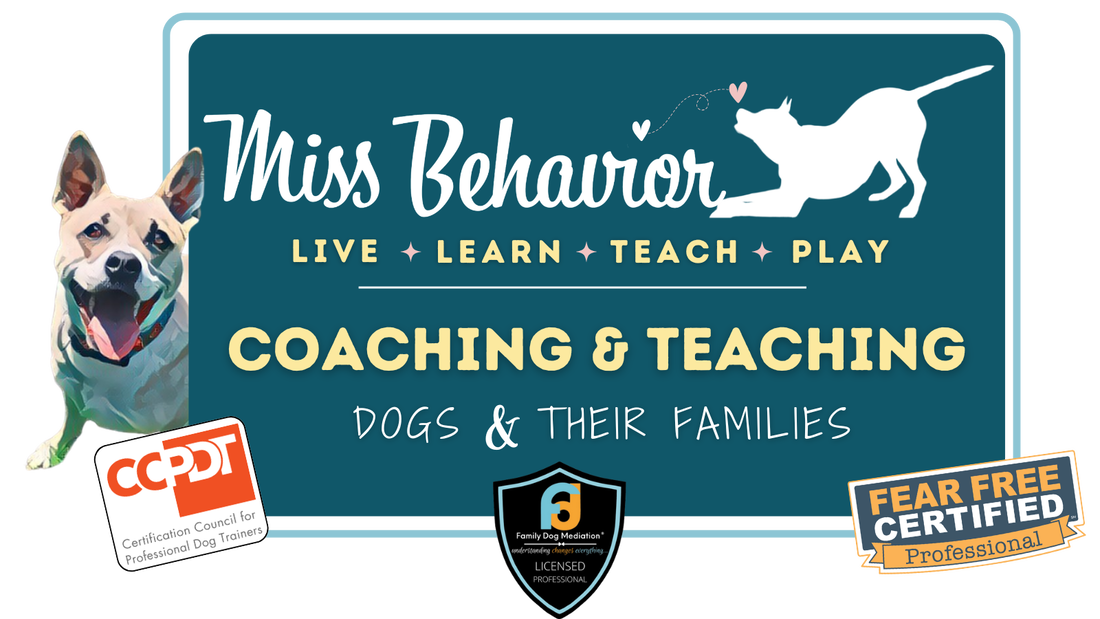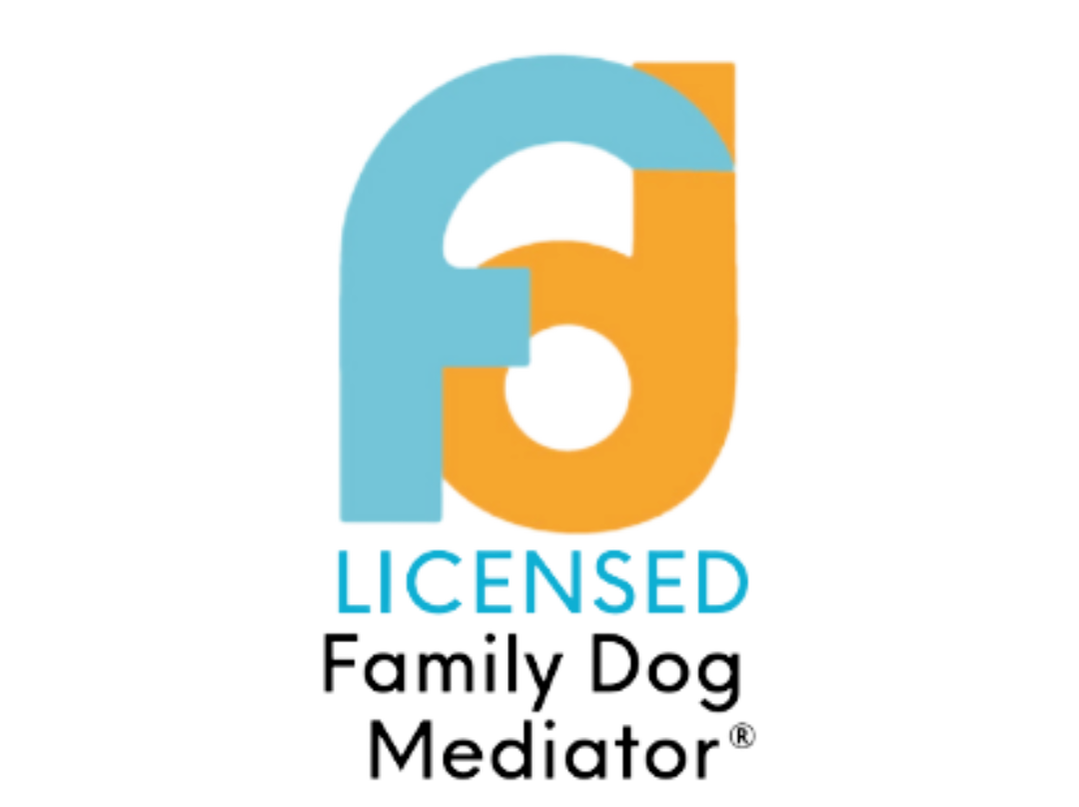Here are the stages that will help set your training progress up for successWhen you are dealing with big emotions in dogs, it's important to break down the training process into smaller achievable goals that set everyone up for success. Reactivity is simply responsiveness to a stressor, trigger, or something exciting in the environment. It can be really difficult for them to think or learn when they are in that state of mind, just as it can be hard for you to take in new information when you're in the same state of mind. When we expect too much from our dogs too soon, it can really set back our training progress leaving both ourselves and our dogs very frustrated and feeling defeated. For that reason, I'm going to show you the 6 stages to focus on to help find your success path in the training process 1. Understanding: Knowing why your dog is struggling and what you can realistically and practically do to start helping himThe first piece to getting started down this path is to make sure you understand how dogs handle thresholds, what it means when they get emotional, what to be watching for in their body language, and how dogs learn best. Once you have a basic understanding of those pieces, you'll be ready to move right into Stage 2. There will be a lot more to understand along the way but I wouldn't get bogged down in feeling like you need to know it ALL before you can move on to the next stage t help your dog 2. Prevention & Management: Set up your environment to prevent practicing of the behavior If your dog is constantly able to practice the behavior you are ultimately looking to change, he is not only going to get better at performing the behavior your don't want but it can become very self-reinforcing. Reacting to a trigger could help create more space from it and if that is what your dog is looking for, then it worked beautifully in his favor. Think of the classic mailman scenario. Mailman comes, dog barks, mailman goes away. Dog gains the space he was aiming for. VOILA. Like magic, the dog was just reinforced. Instead, you should learn how to set up your environment to keep your dog from seeing the mailman, from being able to practice that behavior, or to be able to offer a different, more acceptable behavior - the mailman still goes away - your dog begins to learn that there are other behaviors that can also make the mailman go away. Once you have a pretty good understanding of how to prevent the practice of the behavior, according to your dog's specific needs and triggers, you're ready to move onto the next stage 3. Skill Building, at home: Teach the skills your dog will need, but do so in the comfort of your home environment first!This is a stage that is often skipped. Many people will try to teach their dog what they need to do under too much distraction to start with. I've heard time and time again "my dog listens well at home but not once we go out". And that's true, and expected of your dog. But what I encourage you to consider here is whether you have taught the actual skills you are going to need when you are dealing with the trigger. Think of the big picture. Let's say your dog is reactive to other dogs when on leash. Classic dog-dog leash reactivity. If you're out on a walk, and you run into a dog, what will that look like? You'll like be within a road's width away. The dog may be approaching. The dog is likely making direct eye contact. Your dog is restricted by the leash. The leash is probably tight. Your breathing speeds up. You're sweating a little more than usual. Eventually, you might hold your breath. You might tighten up on the leash, try to pull your dog closer. You will probably start telling your dog what to do, your voice getting more slightly more frantic as your dog continues to react. You might yell out to the other owner. Heck, you might even have to convince the other owner to leash his dog. Have I made my point? It's chaos. It's a lot to deal with. Instead, you need a plan. If you turn a corner and see a dog, what do you expect your dog to do? What will you physically do? What will you say? How will you handle the leash? If a loose dog comes running up, what will you do then? These are things you need to prepare for yourself. In your dog's case, if you tighten up on the leash, does your dog know to turn to you? If you say your dog's name, does your dog know to look at you. If your dog hears a dog bark, can he think through that? These are all skills that can be taught at home first, split into pieces. It may sound like a lot but if you look at the big picture, then do some splitting. This is how you break the big picture into smaller bites. As your dog gets more skilled, his bites will be bigger, don't worry! 4. Practice the skills, in quiet outdoor spaces This is when you get to take those skills you've worked on with your dog and take them to an empty parking lot, or a field that is under used. Even your front or back yard. Scope out your local area for a few spots that can be used during quieter times to just take the extra time to practice applying those skills you taught at home. Seriously, scope out your town or contact your recreation department. You'd be amazed at how many spots there actually are that are friendly to on-leash dogs but less populated on a regular basis. Sometimes you just need to think outside the box at this stage 5. Practice under controlled distraction, in small groups NH Dog Walking Club Outing NH Dog Walking Club Outing This is the stage where you can organize a small get together with friends, work with your trainer to collaborate some walks or field trips. This can be the hardest stage to coordinate and is often where people get lost on their path. Don't hesitate to reach out to local dog groups. Many people are often in the same boat. If you find the right group of people with the same intentions, to work with their dog at a distance, collaborating with a group like this can be a beautiful thing! The main idea here is that you all have the intention to train. You set your plans up in advance, so everyone is on the same page. Keep the groups small. Work in a space that has enough room to allow lots of space between the dogs! 6. Practice, in real world settings This is your final stage and the one you'll hopefully be able to remain in for a long time, but never be afraid to go back to any of the previous stages if your dog is struggling. As a side note... please consider training your dog to a well-fitted basket muzzle by the time you get to this stage. This can really make or break your dog's ability to go out and about in real world situations. I wrote about this in a blog post about my own dog Willow. You can learn more about appropriate basket muzzle training by visiting the Muzzle Up Project Here are a few ideas for you to get your wheels turning, thinking of locations outside the box:
Ready to get started on your path? Visit my private training and coaching page to get started! So tell me - what stage are you and your dog at?
Which stages do you find are the most difficult to work through?
1 Comment
Edward Wilson
5/30/2021 12:26:08 pm
Practice under controlled distraction, in small groups
Reply
Your comment will be posted after it is approved.
Leave a Reply. |
|
- Home
- About
- Blog
- Services
- Membership
-
Courses & Freebies
- All Courses
- FREE Boredom Buster Recipes
- COURSE: Building Resilience in your Family Dog
- COURSE: Managing the Leash Walk
- Potty Training COURSE
- Paws Off COURSE
- COURSE: Managing the Leash Walk
- FREE Attention Building Challenge
- FREE Scratchboard Training
- FREE Rest and Recovery Round-Up
- FREE Body Language 101
- Contact
- Home
- About
- Blog
- Services
- Membership
-
Courses & Freebies
- All Courses
- FREE Boredom Buster Recipes
- COURSE: Building Resilience in your Family Dog
- COURSE: Managing the Leash Walk
- Potty Training COURSE
- Paws Off COURSE
- COURSE: Managing the Leash Walk
- FREE Attention Building Challenge
- FREE Scratchboard Training
- FREE Rest and Recovery Round-Up
- FREE Body Language 101
- Contact
Search by typing & pressing enter




 RSS Feed
RSS Feed





